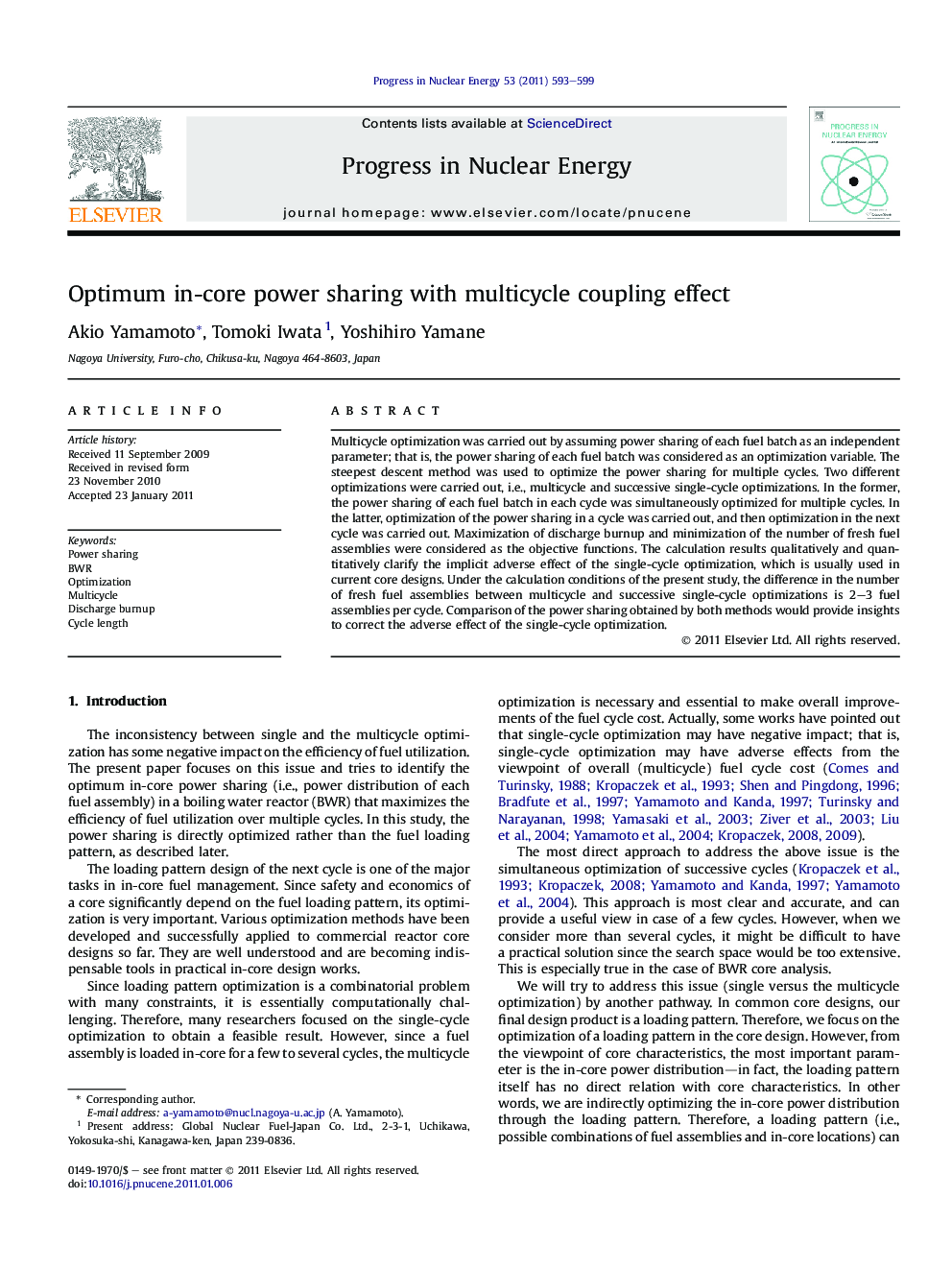| Article ID | Journal | Published Year | Pages | File Type |
|---|---|---|---|---|
| 1740957 | Progress in Nuclear Energy | 2011 | 7 Pages |
Multicycle optimization was carried out by assuming power sharing of each fuel batch as an independent parameter; that is, the power sharing of each fuel batch was considered as an optimization variable. The steepest descent method was used to optimize the power sharing for multiple cycles. Two different optimizations were carried out, i.e., multicycle and successive single-cycle optimizations. In the former, the power sharing of each fuel batch in each cycle was simultaneously optimized for multiple cycles. In the latter, optimization of the power sharing in a cycle was carried out, and then optimization in the next cycle was carried out. Maximization of discharge burnup and minimization of the number of fresh fuel assemblies were considered as the objective functions. The calculation results qualitatively and quantitatively clarify the implicit adverse effect of the single-cycle optimization, which is usually used in current core designs. Under the calculation conditions of the present study, the difference in the number of fresh fuel assemblies between multicycle and successive single-cycle optimizations is 2–3 fuel assemblies per cycle. Comparison of the power sharing obtained by both methods would provide insights to correct the adverse effect of the single-cycle optimization.
